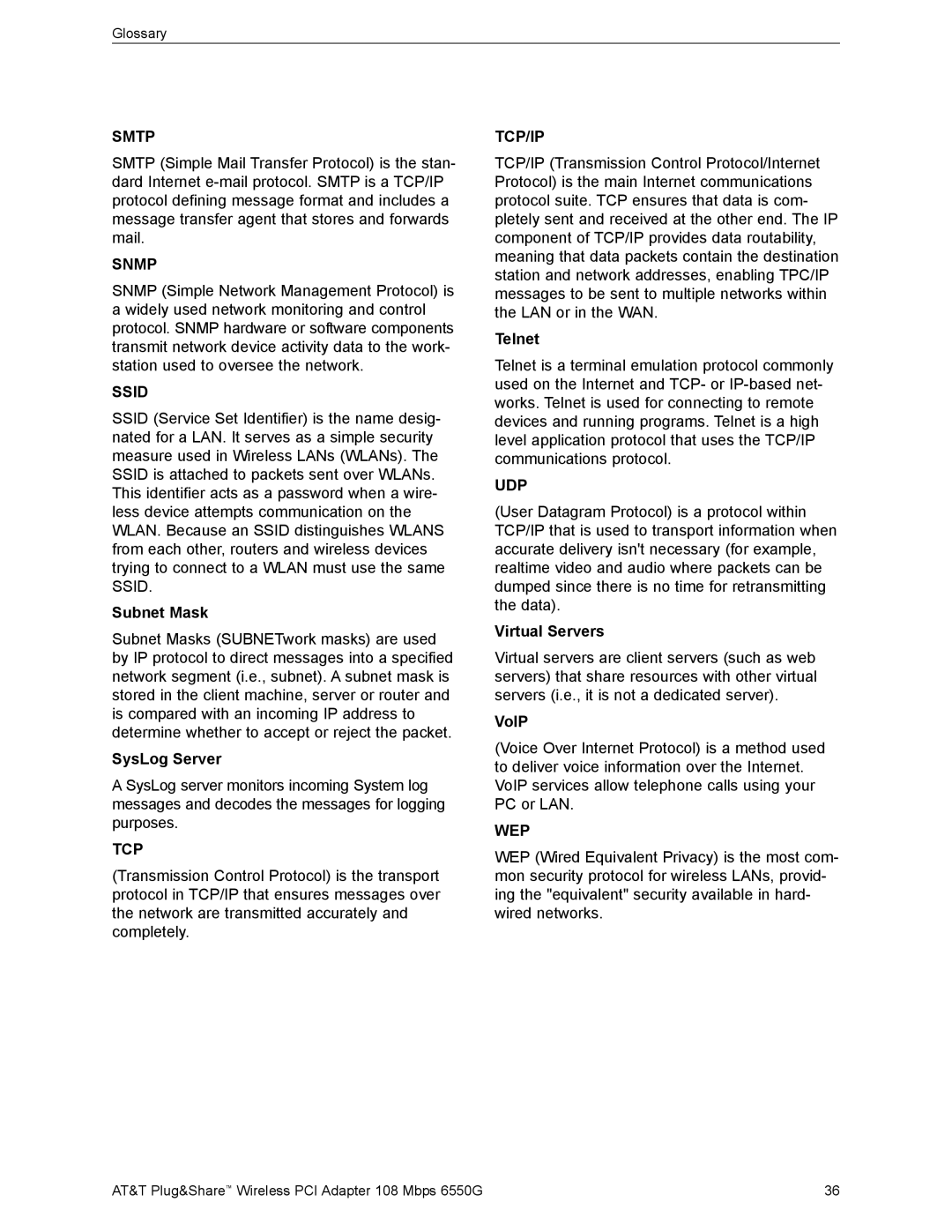Glossary
SMTP
SMTP (Simple Mail Transfer Protocol) is the stan- dard Internet
SNMP
SNMP (Simple Network Management Protocol) is a widely used network monitoring and control protocol. SNMP hardware or software components transmit network device activity data to the work- station used to oversee the network.
SSID
SSID (Service Set Identifier) is the name desig- nated for a LAN. It serves as a simple security measure used in Wireless LANs (WLANs). The SSID is attached to packets sent over WLANs. This identifier acts as a password when a wire- less device attempts communication on the WLAN. Because an SSID distinguishes WLANS from each other, routers and wireless devices trying to connect to a WLAN must use the same SSID.
Subnet Mask
Subnet Masks (SUBNETwork masks) are used by IP protocol to direct messages into a specified network segment (i.e., subnet). A subnet mask is stored in the client machine, server or router and is compared with an incoming IP address to determine whether to accept or reject the packet.
SysLog Server
A SysLog server monitors incoming System log messages and decodes the messages for logging purposes.
TCP
(Transmission Control Protocol) is the transport protocol in TCP/IP that ensures messages over the network are transmitted accurately and completely.
TCP/IP
TCP/IP (Transmission Control Protocol/Internet Protocol) is the main Internet communications protocol suite. TCP ensures that data is com- pletely sent and received at the other end. The IP component of TCP/IP provides data routability, meaning that data packets contain the destination station and network addresses, enabling TPC/IP messages to be sent to multiple networks within the LAN or in the WAN.
Telnet
Telnet is a terminal emulation protocol commonly used on the Internet and TCP- or
UDP
(User Datagram Protocol) is a protocol within TCP/IP that is used to transport information when accurate delivery isn't necessary (for example, realtime video and audio where packets can be dumped since there is no time for retransmitting the data).
Virtual Servers
Virtual servers are client servers (such as web servers) that share resources with other virtual servers (i.e., it is not a dedicated server).
VoIP
(Voice Over Internet Protocol) is a method used to deliver voice information over the Internet. VoIP services allow telephone calls using your PC or LAN.
WEP
WEP (Wired Equivalent Privacy) is the most com- mon security protocol for wireless LANs, provid- ing the "equivalent" security available in hard- wired networks.
AT&T Plug&Share™ Wireless PCI Adapter 108 Mbps 6550G | 36 |
